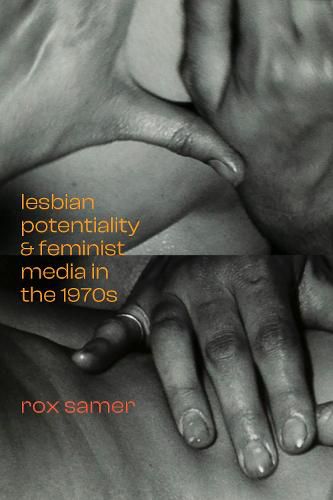Readings Newsletter
Become a Readings Member to make your shopping experience even easier.
Sign in or sign up for free!
You’re not far away from qualifying for FREE standard shipping within Australia
You’ve qualified for FREE standard shipping within Australia
The cart is loading…






In Lesbian Potentiality and Feminist Media in the 1970s, Rox Samer explores how 1970s feminists took up the figure of the lesbian in broad attempts to reimagine gender and sexuality. Samer turns to feminist film, video, and science fiction literature, offering a historiographical concept called lesbian potentiality -a way of thinking beyond what the lesbian was, in favor of how the lesbian signified what could have come to be. Samer shows how the labor of feminist media workers and fans put lesbian potentiality into movement. They see lesbian potentiality in feminist prison documentaries that theorize the prison industrial complex’s racialized and gendered violence and give image to Black feminist love politics and freedom dreaming. Lesbian potentiality also circulates through the alternative spaces created by feminist science fiction and fantasy fanzines like The Witch and the Chameleon and Janus. It was here that author James Tiptree, Jr./Alice B. Sheldon felt free to do gender differently and inspired many others to do so in turn. Throughout, Samer embraces the perpetual reimagination of lesbian and the lesbian’s former futures for the sake of continued, radical world-building.
$9.00 standard shipping within Australia
FREE standard shipping within Australia for orders over $100.00
Express & International shipping calculated at checkout
In Lesbian Potentiality and Feminist Media in the 1970s, Rox Samer explores how 1970s feminists took up the figure of the lesbian in broad attempts to reimagine gender and sexuality. Samer turns to feminist film, video, and science fiction literature, offering a historiographical concept called lesbian potentiality -a way of thinking beyond what the lesbian was, in favor of how the lesbian signified what could have come to be. Samer shows how the labor of feminist media workers and fans put lesbian potentiality into movement. They see lesbian potentiality in feminist prison documentaries that theorize the prison industrial complex’s racialized and gendered violence and give image to Black feminist love politics and freedom dreaming. Lesbian potentiality also circulates through the alternative spaces created by feminist science fiction and fantasy fanzines like The Witch and the Chameleon and Janus. It was here that author James Tiptree, Jr./Alice B. Sheldon felt free to do gender differently and inspired many others to do so in turn. Throughout, Samer embraces the perpetual reimagination of lesbian and the lesbian’s former futures for the sake of continued, radical world-building.